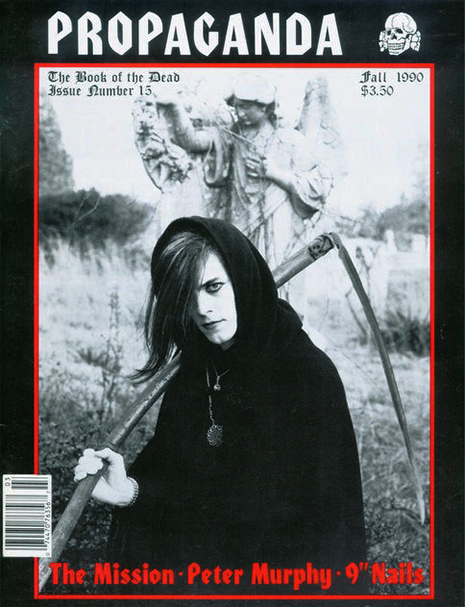Founded in 1982 by New York photographer Fred H. Berger, Propaganda magazine was, at the time of its final issue in 2002, the longest running and most popular chronicle of gothic subculture in the United States. From its infancy as a punk fanzine, it grew in scope, covering the esoteric obsessions of its “Propaganda Minister”—post-punk, death rock, fetish fashion, body modification, BDSM, vampirism, horror literature, androgyny, and paganism were all tossed into its smoking cauldron. Over time, these disparate influences became codified into what we know today as “goth” culture. Never billing itself as a “goth” zine per-se, Propaganda had as much to do with developing the aesthetic of goth as any black-clad scare-band you’d possibly care to name.
Nancy Kilpatrick’s The Goth Bible: A Compendium for the Darkly Inclined calledPropaganda “the only subculture publication known to just about every goth on the planet” for good reason. Its importance to that scene can’t be overstated. In fact, you could say that goth had to happen with Propaganda acting as a two-way mirror, both projecting and reflecting the dark music, fashion, art, and literature of its post-Cold War audience.
I didn’t discover Propaganda until the early ‘90s, when it seemed to be everywhere. I remember, at the time, being impressed that a zine so specifically targeted to a relatively small subculture was turning up in major newsstands and bookstores, even in the tiny South Carolina town where I lived. This was pre-Internet Age, when getting such significant distribution would have been a major struggle. The striking, brooding images in those ‘90s issues, Propaganda‘s heyday, are burned into my mind. The models in Propaganda seemed to me, at the time, to be the most (depressingly) glamorous people on the planet.
I was able to pin down the man behind many of those images, Fred Berger himself, to talk to him about the magazine, its history and legacy, and where the gothic subculture has gone in a post-Propaganda world.
read full article in. http://dangerousminds.net/comments/propaganda_the_aesthetics_of_evil_and_why_goth?










